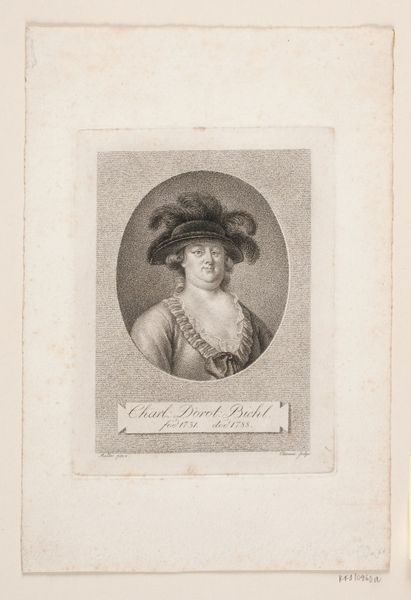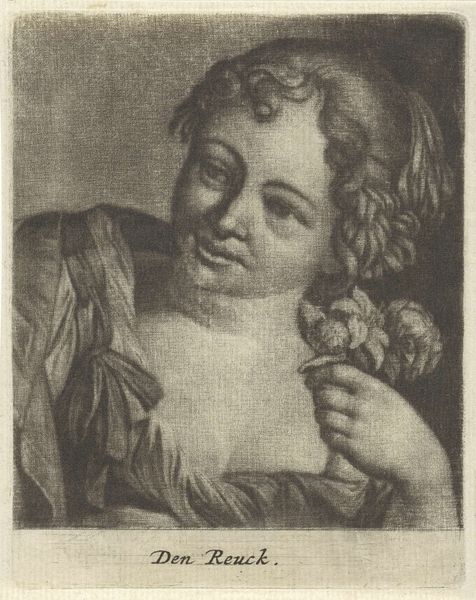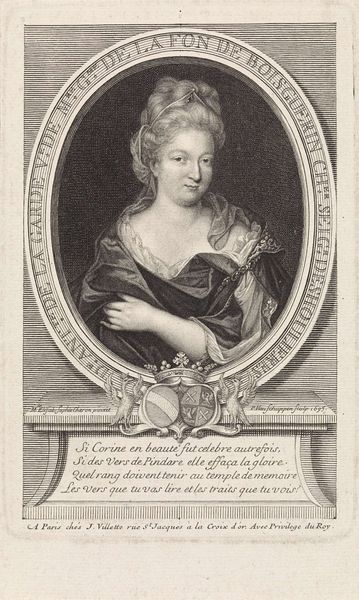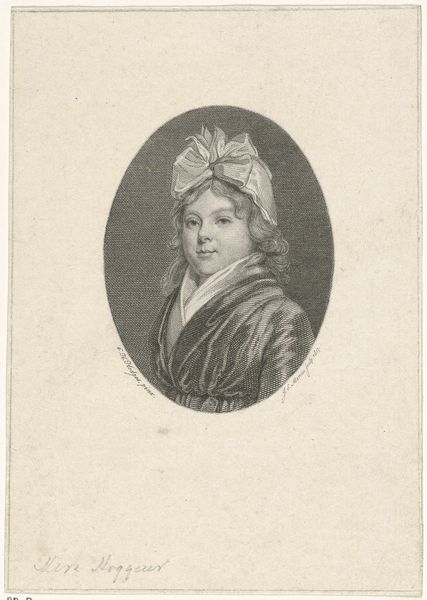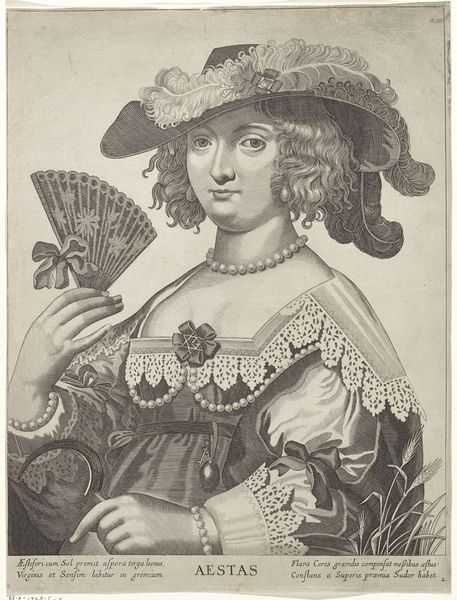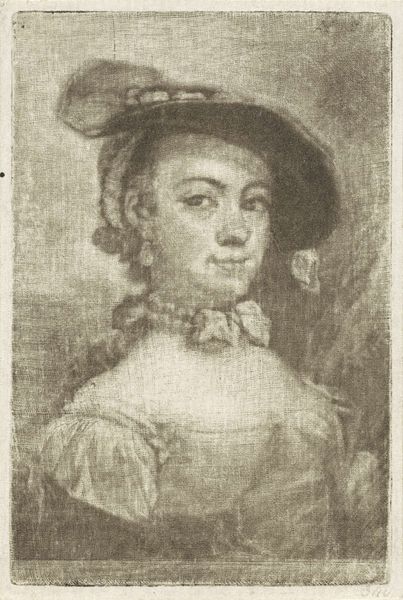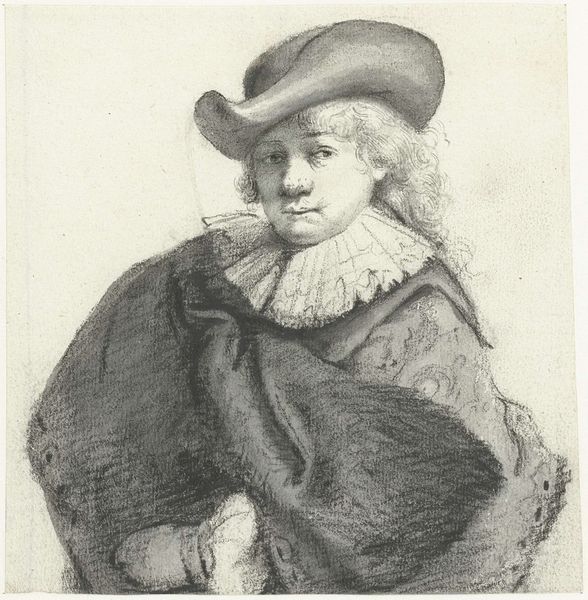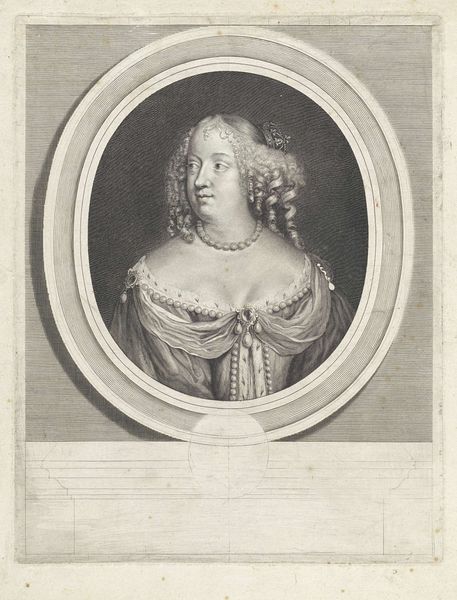
Dimensions: 171 mm (height) x 128 mm (width) (bladmaal), 136 mm (height) x 102 mm (width) (plademaal), 118 mm (height) x 84 mm (width) (billedmaal)
Curator: Before us we have a portrait, specifically an engraving by J.F. Clemens dating from the late 18th or early 19th century. The engraving depicts Charlotte Dorot. Biehl, her birth and death dates listed just below her name. What strikes you first? Editor: All those feathers! The portrait feels immediately… indulgent. I’m drawn to the materiality though—the density of lines in the engraving itself and how that medium impacts the accessibility of portraiture at this time. Curator: Yes, let's consider the engraving. Notice how the intricate lines delineate form, creating shadow and depth. It’s all a calculated dance between positive and negative space, working within a highly formalized system of representation to flatten a three-dimensional reality. Editor: Exactly! Engraving enabled broader reproduction. How does Clemens adapt the laborious craft of etching to reflect or perhaps democratize depictions of figures such as Biehl, given the traditional association of painted portraiture with wealth and exclusivity? It is, perhaps, indicative of societal shifts within 18th century Europe. Curator: Fascinating point. Consider the formal composition; the oval format, the subject framed elegantly from the bust up, creating a sense of decorum. But there's also a tension, the sitter is breaking away from this format with those assertive feathers that feel unruly, untamed. The face shows strength and composure, a touch of defiance maybe? Editor: Her attire too seems like an interesting commentary. The ruffled collar, satin bow, those feathers… they speak to production: someone had to make all this. These aren't naturally-occurring decorative flourishes. What implications arise from exploring those manufacturing processes when reading a portrait like this? Curator: Such focus shifts us from subject to means, which complicates notions of display and the art object itself. Editor: Perhaps it's this collision between individual personality and mechanized reproduction that makes this portrait so engaging even centuries later. Curator: Agreed. There is indeed much to be gained from these multiple viewpoints. Editor: Indeed. By intertwining the personal and the societal, we unveil layers previously hidden in plain sight.
Comments
No comments
Be the first to comment and join the conversation on the ultimate creative platform.
